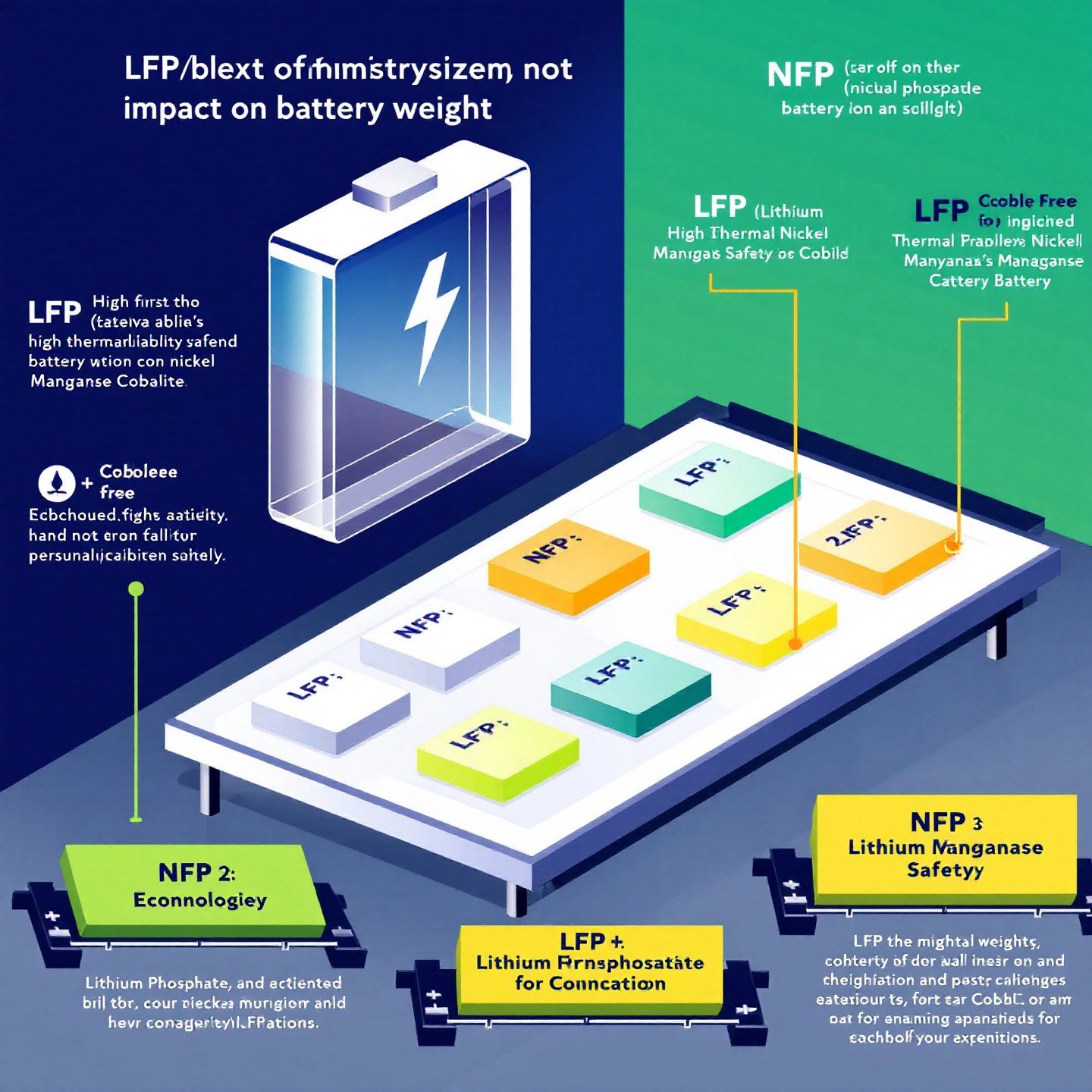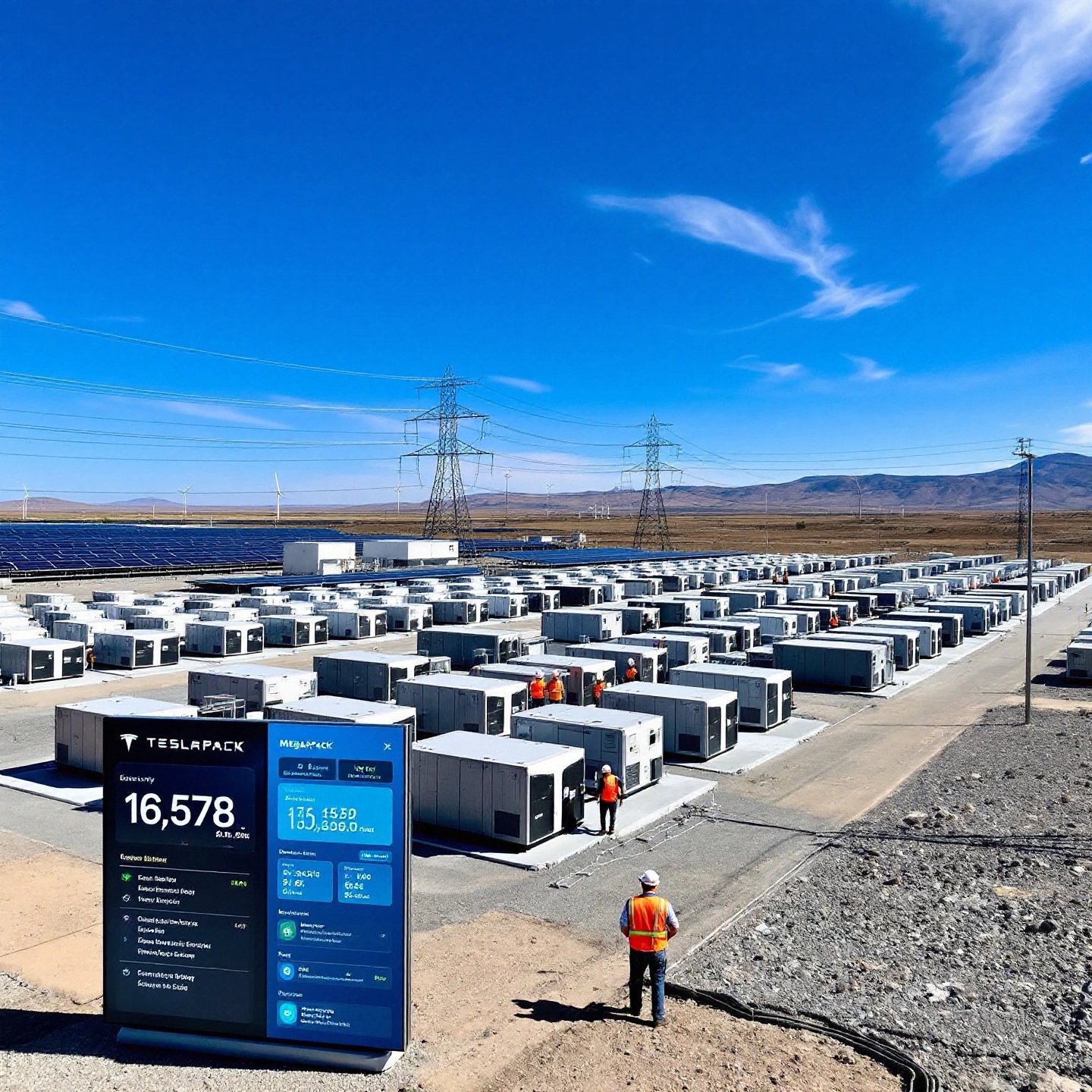Introduction to 200 kWh Battery Weight
When you think about the power source for electric vehicles (EVs) and large-scale energy storage systems, the 200 kWh battery stands out as a formidable option. But have you ever wondered how much doesa a 200 kwh battery weiught? Understanding the weight of such batteries is crucial, as it significantly influences the design, performance, and logistics of these systems.
Let’s start with the basics: a 200 kWh battery is a substantial energy storage unit. Its weight is not just a number on a spec sheet; it has far-reaching implications. For electric vehicles, the battery weight directly affects vehicle dynamics, range, and efficiency. A heavier battery can reduce an EV’s acceleration and handling capabilities, while also increasing energy consumption. This means that manufacturers must carefully balance battery capacity with weight to optimize performance and efficiency.
In the realm of energy storage systems, the weight of a 200 kWh battery impacts installation and logistics. Imagine trying to transport and set up a massive battery system; the weight becomes a logistical challenge. It requires careful planning and infrastructure support to ensure safe and efficient deployment.
Moreover, the weight of these batteries has a ripple effect on the supply chain and manufacturing processes. As battery sizes increase to meet higher energy demands, the strain on material resources grows. This can lead to challenges in sourcing materials and scaling production, ultimately affecting the cost and availability of these batteries in the market.
In summary, understanding the weight of a 200 kWh battery is more than just a technical detail; it is a critical factor that affects everything from vehicle performance to energy storage logistics. As we delve deeper into this topic, you’ll notice how manufacturers are innovating to overcome these challenges, striving for a balance between capacity, weight, and performance.

Factors Influencing Battery Weight
When examining the question of how much doesa a 200 kwh battery weiught, several key factors come into play. The weight of a battery is not just determined by its size; it is significantly influenced by its chemistry, energy density, and structural components. Understanding these factors is crucial for optimizing both electric vehicles and energy storage systems.
Battery Chemistry: A Weighty Decision
Battery chemistry is a primary determinant of weight. Different chemistries, such as Lithium Iron Phosphate (LFP) and Lithium Nickel Manganese Cobalt Oxide (NMC), offer varying trade-offs between energy density and weight. For instance, LFP batteries are known for their safety and long life cycle, but they typically have a lower energy density compared to NMC batteries. This means that for the same energy capacity, an LFP battery might weigh more than an NMC battery. On the other hand, NMC batteries, known for their higher energy density, can store more energy in a lighter package, making them preferable for applications where weight is a critical factor, such as in electric vehicles.
The Role of Energy Density
Energy density, expressed in watt-hours per kilogram (Wh/kg), is another crucial factor. It measures how much energy a battery can store relative to its mass. Higher energy density batteries can store more energy in a smaller, lighter package. This is particularly important in applications where space and weight are at a premium. For electric vehicles, a higher energy density translates to longer range and better efficiency. According to Acculon Energy, optimizing energy density is vital for enhancing performance and sustainability in battery pack design.
Structural Components and Safety Considerations
The structural components of a battery also add to its weight. These include protective casings and thermal management systems, which are essential for safety and performance. For example, a robust enclosure is necessary to safeguard the battery against physical damage and thermal incidents, but it also adds to the overall mass. Similarly, thermal management systems, which prevent overheating and ensure optimal performance, can increase the weight of the battery pack.
In conclusion, the weight of a 200 kWh battery is influenced by a combination of its chemistry, energy density, and structural components. As technology advances, manufacturers are continually seeking ways to optimize these factors, striving to reduce weight while enhancing performance and safety. This balance is crucial for the future of electric vehicles and energy storage systems, as it directly impacts their efficiency, cost, and environmental footprint.
Typical Weight Ranges for 200 kWh Batteries
When exploring the realm of 200 kWh batteries, understanding the typical weight ranges is essential. These batteries are pivotal in both commercial energy storage systems and automotive applications, where weight plays a crucial role in performance and logistics.
To give you a clearer picture, let’s delve into some specific examples. The StackRack SRBOX-200 is a high-voltage commercial battery system designed for various energy storage needs. This modular system can reach up to 200 kWh capacity by integrating up to 14 individual 14.3 kWh battery modules. The entire system, including its HVAC and fire-suppression features, measures 43.3 inches in depth and width and 92.1 inches in height, with a significant weight due to its robust design and safety features. This makes it suitable for outdoor installations where weight is less of a constraint compared to mobility-focused applications like electric vehicles. (Source)
In automotive applications, the weight of a 200 kWh battery can vary significantly depending on the battery chemistry and design optimizations. For instance, a 200 kWh battery pack using Lithium Nickel Manganese Cobalt Oxide (NMC) cells, known for their high energy density, might weigh less compared to one using Lithium Iron Phosphate (LFP) cells. This is because NMC cells can store more energy per kilogram, offering a lighter solution for electric vehicles aiming to maximize range without compromising on weight.
| Battery System | Weight Range | Application |
|---|---|---|
| StackRack SRBOX-200 | Heavy (exact weight varies by configuration) | Commercial Energy Storage |
| NMC-based EV Battery | Approximately 1,200 kg | Automotive |
| LFP-based EV Battery | Higher than NMC equivalent | Automotive |
As illustrated, the weight of a 200 kWh battery can vary widely based on its intended use and the technology employed. In commercial settings, where the battery is stationary, heavier systems like the StackRack SRBOX-200 are feasible. However, in automotive applications, minimizing weight is crucial to enhance vehicle efficiency and performance.
In the next section, we’ll explore how these weight variations impact electric vehicle performance, highlighting the trade-offs between battery capacity and vehicle dynamics.

Impact of Battery Weight on Electric Vehicles
When considering the dynamics of electric vehicles (EVs), battery weight emerges as a pivotal factor influencing performance. You might wonder, how exactly does this weight impact an EV’s range, efficiency, handling, and safety? Let’s delve into these aspects to understand the trade-offs involved in balancing energy capacity and vehicle dynamics.
Range and Efficiency: The Balancing Act
The weight of an electric vehicle battery directly affects its range and efficiency. A heavier battery requires more energy to move, which can reduce the overall distance an EV can travel on a single charge. This relationship creates a balancing act for manufacturers who must decide between increasing battery capacity for longer range and keeping the vehicle light enough to maintain efficiency. According to CyberSwitching, optimizing this balance is crucial for maximizing the performance of electric vehicles.
Handling and Dynamics: A Matter of Balance
Handling is another critical area impacted by battery weight. The distribution of weight within the vehicle affects its center of gravity (CoG), roll center, and polar moment of inertia. A lower CoG, often achieved by placing the battery pack at the bottom of the vehicle, enhances stability and reduces body roll during cornering. However, if the battery is excessively heavy, it can lead to increased load on the suspension system, affecting handling and agility. As noted by eMobility Engineering, the precise placement and weight distribution are key to achieving optimal vehicle dynamics.
Safety Considerations
Safety is paramount in vehicle design, and battery weight plays a role here as well. Heavier batteries require robust structural support to ensure they remain secure during collisions. This adds to the vehicle’s overall weight, potentially impacting performance. However, a well-designed battery pack can contribute to the vehicle’s structural integrity, enhancing passenger safety.
In conclusion, the weight of an electric vehicle battery is a critical factor that influences range, efficiency, handling, and safety. Manufacturers must carefully consider these aspects to optimize vehicle performance while ensuring safety and comfort. As we move forward, advancements in battery technology and materials will likely continue to address these challenges, paving the way for more efficient and dynamic electric vehicles. In the following section, we will explore the role of battery weight in stationary energy storage solutions, shedding light on the logistical challenges and considerations involved.
Battery Weight in Renewable Energy Storage
Imagine trying to harness the power of the sun or wind, only to find that the energy you’ve captured needs to be stored effectively for future use. This is where stationary energy storage systems play a crucial role, and understanding the energy storage battery weight is key to optimizing these solutions. But what challenges do we face when dealing with the weight of these systems?
Installation Considerations
The installation of stationary battery systems requires meticulous planning, largely due to the significant weight involved. These systems, which can include large-scale batteries up to 200 kWh, need robust structural support. This is not just about placing a battery in a location; it involves ensuring the site can support the weight, often necessitating reinforced flooring or dedicated platforms. The Huin Global highlights that these systems typically include a battery array, electronic controls, and thermal management, all contributing to the overall weight.
Logistical Challenges
Transporting these heavy systems is another significant hurdle. Moving a 200 kWh battery requires specialized equipment and vehicles capable of handling the load. This logistical challenge extends beyond mere transportation; it also involves coordinating with local infrastructure to ensure roads and bridges can accommodate the weight. Additionally, the installation process itself can be labor-intensive, requiring cranes or other heavy machinery to position the batteries correctly.
Supporting Large Battery Systems
Once installed, the maintenance and operational support of these systems continue to be influenced by their weight. The structural components, such as enclosures and thermal management systems, are integral to maintaining system integrity and safety, as they prevent overheating and physical damage. These components, while necessary, add to the overall mass and complexity of the installation.
In summary, the weight of stationary battery systems plays a pivotal role in their installation and logistical planning. As the demand for renewable energy storage grows, optimizing these factors will be crucial for efficient and sustainable energy solutions. Next, we will explore technological advancements aimed at reducing battery weight, which promise to enhance energy density and performance.
Advances in Battery Technology Reducing Weight
Imagine a world where electric vehicles (EVs) are not only efficient but also lightweight, revolutionizing transportation as we know it. Sounds complex? Let’s delve into the fascinating realm of battery technology advancements that are making this vision a reality. As we explore the innovations aimed at reducing battery weight, you’ll notice how these developments enhance energy density and overall performance, addressing the perennial question: how much doesa a 200 kwh battery weiught?
Innovative Materials and Design Optimizations
One of the key areas of advancement in battery technology is the development of new materials that promise to reduce weight significantly. For instance, the integration of nanotechnology, such as NanoBolt lithium tungsten batteries, is paving the way for lighter and more efficient batteries. These batteries incorporate tungsten and carbon nanotubes, creating a vast surface area for ions to attach during charge cycles, thereby enhancing energy storage without adding extra weight. Gray Insights highlights how these materials are ready to be adapted for various lithium battery designs, offering a promising step towards lighter batteries.
Solid State Batteries: A Game Changer
Another breakthrough in reducing battery weight comes from the development of solid-state batteries (SSBs). Unlike traditional lithium-ion batteries, SSBs replace the liquid electrolyte with solid materials, which are generally less flammable and more stable. This transition not only enhances safety but also allows for a more compact design, reducing the overall weight of the battery pack. According to EV Design and Manufacturing, SSBs can potentially offer higher energy densities, making them ideal for applications where weight and space are critical factors.
Design Innovations and Structural Efficiency
Design innovations are also playing a crucial role in reducing battery weight. For example, the use of modular designs, such as TankTwo’s String Cell™ technology, allows for quick reconfiguration and replacement of battery cells, minimizing downtime and enhancing efficiency. Furthermore, advancements in materials like lighter aluminum trays and thermally active adhesives are reducing the non-cell weight in battery packs, contributing to a lighter overall system.
In summary, the advancements in battery technology are not just about making batteries lighter; they are about enhancing performance and efficiency. As these innovations continue to evolve, they promise to transform the landscape of energy storage, making it more sustainable and efficient. This progress is crucial as we strive to meet the growing demands of renewable energy and electric mobility. In the next section, we will take a closer look at Tesla’s Megapack, a prime example of a large-scale battery system that incorporates some of these cutting-edge technologies.

Case Study
Imagine a future where energy storage is not just efficient but also scalable to meet the growing demands of renewable energy. Sounds ambitious? Tesla’s Megapack brings this vision to life, offering a glimpse into the potential of utility-scale battery systems. But what makes the Megapack stand out, and how does its weight factor into its applications?
Understanding the Tesla Megapack
The Tesla Megapack is designed as a massive energy storage solution, primarily targeted at utility-scale applications. Each Megapack unit has a capacity of over 3.9 MWh, making it a powerhouse for storing and supplying energy to the grid. This capacity allows it to stabilize the grid, provide backup during outages, and support renewable energy integration. The Megapack is particularly notable for its scalability, allowing multiple units to be combined to form larger energy storage systems.
Weight and Design Considerations
When it comes to the Tesla Megapack weight, each unit is engineered to be as efficient as possible while maintaining robust structural integrity. The design includes integrated safety systems and specialized monitoring software, ensuring reliability and safety. Although specific weight details are proprietary, the emphasis on scalability and ease of installation suggests a design that balances mass with functionality. The Megapack’s fully assembled shipping and quick installation capabilities further highlight Tesla’s focus on minimizing logistical challenges associated with large-scale battery systems.
Applications in Utility-Scale Energy Storage
The Megapack’s applications extend across various utility-scale projects, providing essential services such as renewable smoothing, demand support, and infrastructure investment deferral. By storing excess renewable energy and discharging it during peak demand, the Megapack helps balance the grid and reduce reliance on fossil fuels. Its role in projects like the Gambit Energy Storage Park and the Victoria Big Battery demonstrates its versatility and effectiveness in enhancing grid resilience and supporting renewable energy adoption.
In conclusion, the Tesla Megapack exemplifies the potential of utility-scale battery systems to transform energy storage infrastructure. By integrating advanced design, scalability, and robust applications, it addresses the challenges of transitioning to a more sustainable energy future. As we continue to explore advancements in battery technology, systems like the Megapack will play a crucial role in shaping the landscape of renewable energy storage.
Next, we will explore how lightweight solar solutions are revolutionizing the renewable energy sector, offering new possibilities for integration and efficiency.

Renewable Energy Nexus
Imagine transforming your energy consumption with solutions that are not only sustainable but also easy to integrate and install. Sounds appealing? Renewable Energy Nexus offers innovative lightweight solar panels that promise to revolutionize how businesses and individuals harness solar power. But what makes these panels stand out?
Advantages of Lightweight Solar Panels
Traditional solar panels often pose challenges due to their weight and the structural requirements needed for installation. However, lightweight solar panels provide a practical alternative, especially for roofs that cannot support heavy loads. Their reduced weight means less need for structural reinforcements, significantly cutting down on installation costs and time. According to Solarge, these panels are versatile, easy to install, and maintain high performance, making them a cost-effective choice for businesses aiming to reduce their carbon footprint.
Facilitating Easier Integration
The integration of lightweight solar panels into existing energy systems is seamless. Their design allows for installation on a wide range of surfaces, overcoming the limitations faced by traditional panels. This flexibility opens up opportunities for more businesses and homeowners to adopt solar energy, contributing to a sustainable future. Furthermore, these panels are environmentally friendly, being PFAS-free and fully recyclable, which supports a circular economy by allowing materials to be reused without degrading quality.
Renewable Energy Nexus’s Offerings
Renewable Energy Nexus stands out with its comprehensive range of solar panel products tailored to meet diverse energy needs. From flexible portable panels to larger bifacial models, their offerings are designed to cater to various applications, from small RVs to large commercial spaces. By choosing Renewable Energy Nexus, you gain access to expert guidance and a commitment to helping you embrace a cleaner, brighter future. Learn more about their innovative solutions here.
In summary, the lightweight solar solutions offered by Renewable Energy Nexus not only facilitate easier installation and integration but also align with sustainable practices, making them an attractive option for those looking to invest in renewable energy. As we continue to explore advancements in energy solutions, these innovations pave the way for a more sustainable and efficient energy landscape.
Conclusion
Throughout our exploration of 200 kWh battery weight, we’ve uncovered its pivotal role in shaping the future of electric vehicles (EVs) and energy storage systems. The weight of these batteries is not merely a technical specification; it significantly impacts vehicle dynamics, energy efficiency, and logistical considerations in stationary storage solutions.
Our journey began with understanding the fundamental factors influencing battery weight, such as chemistry, energy density, and structural components. We saw how different chemistries like Lithium Iron Phosphate (LFP) and Lithium Nickel Manganese Cobalt Oxide (NMC) offer varied trade-offs between weight and performance, crucial for optimizing both EVs and energy storage systems.
We then examined typical weight ranges for 200 kWh batteries, highlighting their applications in commercial energy storage and automotive sectors. The comparison of systems like the StackRack SRBOX-200 and NMC-based EV batteries illustrated the diverse weight considerations across these applications, emphasizing the need for careful balance between capacity and mass.
As we delved into the implications of battery weight on electric vehicles, it became clear that manufacturers face a delicate balancing act. Battery weight influences range, efficiency, handling, and safety, necessitating innovative design solutions to optimize performance without compromising safety.
In stationary energy storage, the weight of batteries poses installation and logistical challenges, requiring robust support and careful planning. Yet, these challenges underscore the importance of advancing battery technology to reduce weight and enhance efficiency.
Looking ahead, ongoing advancements in battery technology promise to address these challenges. Innovations in materials and design, such as solid-state batteries and nanotechnology, are paving the way for lighter, more efficient energy storage solutions. These future battery advancements hold the potential to transform the landscape of renewable energy and electric mobility, making sustainable energy more accessible and practical.
In conclusion, understanding and optimizing the weight of 200 kWh batteries is crucial for advancing technology in EVs and energy storage systems. As we continue to innovate, the quest for lighter, more efficient batteries will remain at the forefront of achieving a sustainable energy future.
Frequently Asked Questions
1. How much does a 200 kWh battery typically weigh?
A 200 kWh battery can weigh between 1,200 kg to 2,860 kg, depending on the chemistry and design optimizations used. Factors like energy density and structural components significantly influence this weight.
2. What factors influence the weight of a 200 kWh battery?
The weight is influenced by battery chemistry, energy density, and structural components. Chemistries like LFP and NMC offer different trade-offs in weight and energy capacity.
3. Why is battery weight important for electric vehicles?
Battery weight affects an EV’s range, efficiency, and handling. Lighter batteries can improve acceleration and reduce energy consumption, enhancing vehicle performance.
4. How does battery weight impact stationary energy storage?
In stationary systems, battery weight affects installation and logistics. Heavy batteries require robust support structures and careful logistical planning for transport and setup.
5. What advancements are reducing battery weight?
Innovations in materials like nanotechnology and solid-state designs are reducing battery weight. These advancements increase energy density and improve performance.



